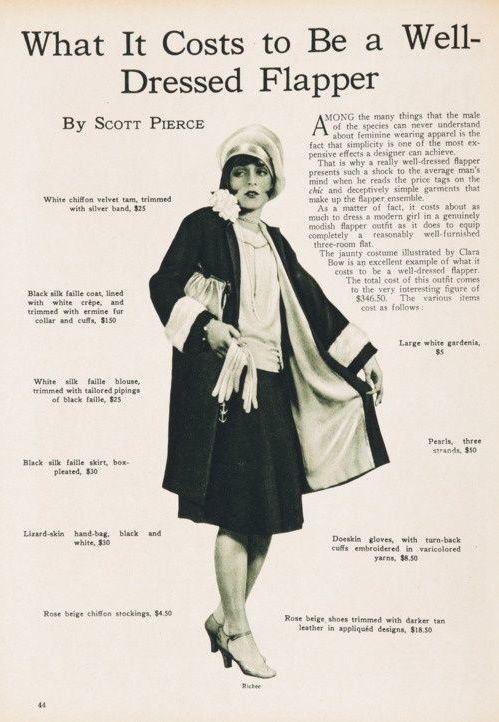Not the Glad Rags
Casual wear of the 20s claimed a more androgynous style due to the powerful women's rights movement of the time. Key styles of the golden era are a dropped waist, straight figure, and loose fitting clothing. As time progressed, the hemline shortened to just below the knee, showing off a scandalous pair of gams.
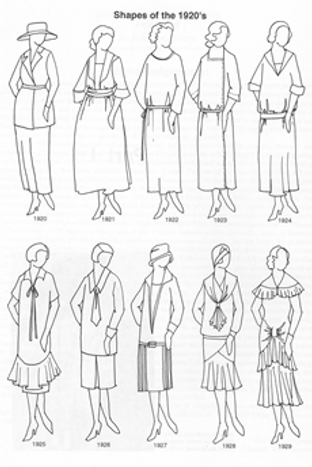
20s fashion was all about elongating the body. Tall and thin was the "in" shape. Any accents done would be vertical, and box pleating was commonly used on skirts. The only horizontal lines used came in the form of the belt, ruching around the neck and shoulders, and trim on the bottom edge of the skirt.
To fit in with the jazz culture, low heels and t-strap shoes became all the rage.
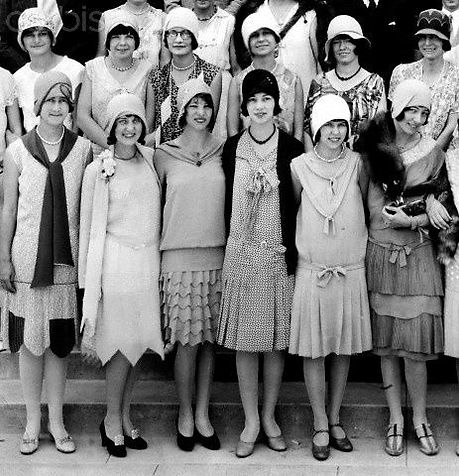
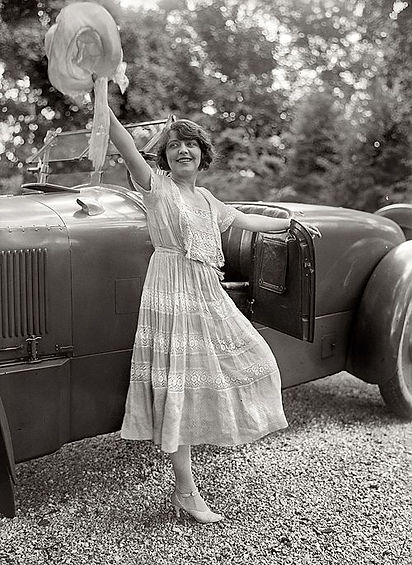
Just a bunch of lovely Tomatoes
The day errand dress was the most often worn. They usually came in solid colors with little bits of trim. (embroidery, etc.) Contrasting trim colors lined skirts, sleeves, neck, and pocket edges. The asymmetrical look of brass buttons on an outfit were borrowed from men's navy yachting jackets. Ruffles were not used on the hem but usually down the bodice or skirt.
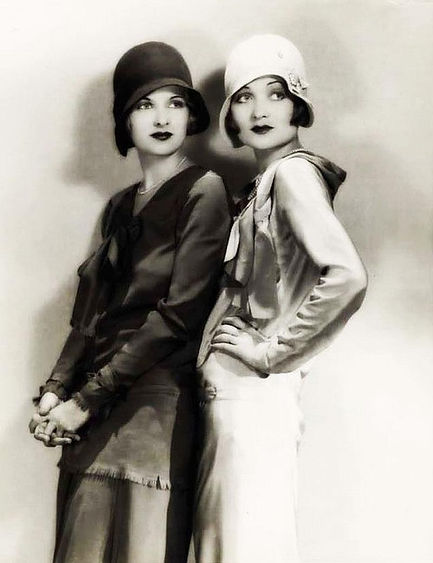
The position of the belt on the waist is something often associated with the year. In the early 20s, women wore wide sashes on the middle or low waist. However in the late 20s, the trend was to wear them thin and low. However, it eventually was up to the individual woman to decide which trend she found most flattering.
Even if you don't have the bees
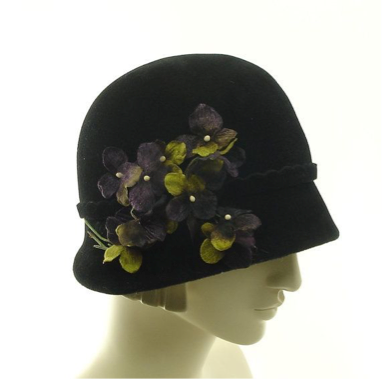
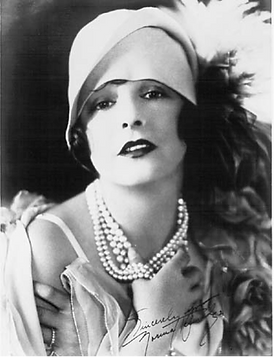
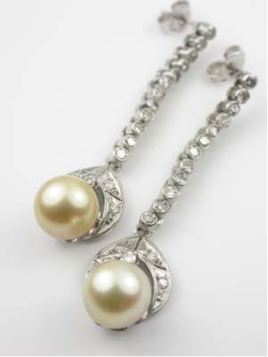
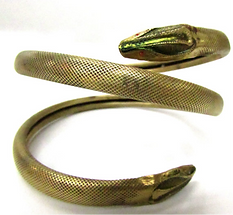
Cloche hats were an iconic accessory to this period. If you had one, you were quite the "Cat's Meow."
Oyster Fruit, otherwise known as pearls, added a swanky touch to the outfit.
And with the discovery of King Tut's tomb came a huge fascination with Egyptian motifs. Anything Egyptian was hip to the jive.
What a Sweet Lid!
Similarly, women who weren’t considered flappers dressed in evening gowns that featured the hemline below the knee and swishing freedom against their getaway sticks as they danced, as well as new softer and more feminine fabrics weighed down with elegant beadwork. For evening frock, silk, chiffon, velvet, and taffeta were favored fabrics. But silk was too expensive for the working class girl. Therefore, artificial silk Rayon was the alternative when it came to designing an evening frock. The fabric that was used was frequently decorative. Throughout the decade, hemlines of evening dresses rose and fell, but revealing shoulders and backs was consistent. There was also a straight and angular shape in evening gowns. This shape reflected the influence of Les Arts Decoratifs or Art Deco.
Though the fringy mini-dress was a popular evening gown in twenties, it was not was not the only style of evening dress that existed then. By 1920, the chemise/shift dress was worn during the daytime as well as the evening because of designers Jeanne Lanvin, Callot Seours, and Coco Chanel. Moreover, Chanel introduced numerous black evening dress styles. Because it was simple and flattering, practically every girl incorporated a little black shift dress into their wardrobe. In addition, Jeanne Lanvin introduced the Robe de Style. The dress was inspired by historical lines. It featured a nipped waist and billowing skirt. She also popularized the ‘garconne look’− epitomized by the simple chemise dress in day-wear or evening wear as mentioned previously. It became the dominant fashion line from 1923 to 1928. Increasingly, Madeleine Vionnet popularized the bias cut which was a woven fabric, mainly silk, that was cut at a 45 degree angle to its major seam lines. The cut allowed the fabric to hang and drape in folds and stretch over the counters of a woman’s figure. Not to mention, the dress could easily be pulled on and off. Another popular cut for evening dresses was a straight tabard-style. This style had side inserts, and featured low cut backs as well as thin shoulder straps.
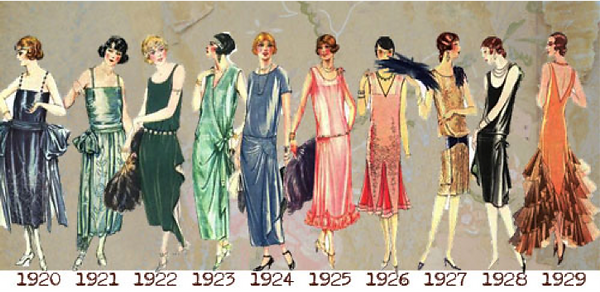

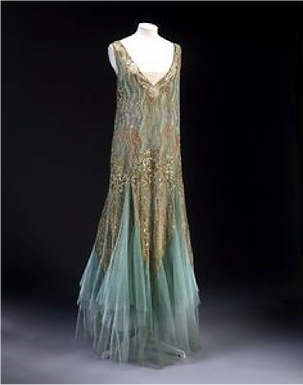
Perfect for a Hash House with your Flaming Youth
